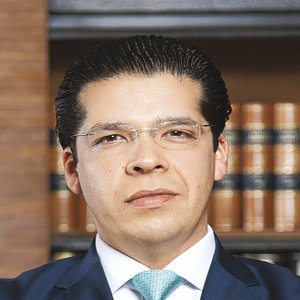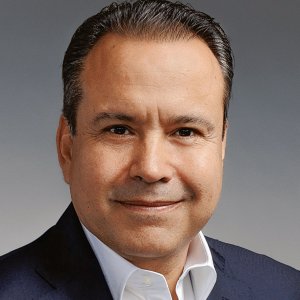Translating Regulatory Framework for Effective Decision-Making

STORY INLINE POST
Q: What added value does Enix’s consulting services provide to the renewable energy sector?
FS: The tenure of our staff at CRE during the key period prior to the reform gives us a unique insight that we can offer our clients. Few people know the depths of Mexico’s regulatory and legal framework as we do. This includes the full spectrum of the industry, from hydrocarbons to the electric grid. We offer a comprehensive view of the sector’s new and highly complex regulatory structure, including the links between gas and power. Without this input, wrong and costly decisions can be made. We offer authority and leadership in each and every one of our projects. We are the best ally to a stakeholder’s business because we know the minds of legislators and regulators and we put together interdisciplinary services to reach our client’s goals. Our consulting services ensure on-schedule and successful projects.
Q: What issues still need to be resolved to ensure the success of Mexico’s energy transition?
FS: Long-Term Contracts (LTCs) are fundamental to the financing of projects, at least during this stage of the reform. As the market evolves and generates a track record for prices, project financing entities will have a reference, making it easier for merchant projects to attract funding. So far, the most relevant LTCs materialized during the long-term electricity auctions or the pipeline tenders organized by CFE. Now, we are already seeing incentives for developing a more diversified market in the third electricity auction, where CFE will no longer be the sole load-serving entity allowed to participate as a potential buyer. Private Load Serving Entities and qualified user market participants will be allowed to make purchase offers through the Clearing House.
RN: Another element of note is electricity transmission and distribution infrastructure. A lot of attention is being directed at increasing clean and renewable generation capacity and at the long-term electricity auctions. There will come a time when infrastructure will have to be sufficient to satisfy this additional capacity. Mexico’s energy regulators need to provide the required flexibility to insert the necessary technologies that will add these nonconventional resources to the grid.
FS: The prevalent belief that transmission and distribution remain exclusively in the hands of the state through CFE is inaccurate. The government remains in control but the private sector can actually participate. Private participation ranges from private grids to megaprojects that will be tendered as the result of transmission planning.
Q: What does the law say about PPPs in transmission and distribution?
FS: The National Energy System planning and control, as well as the transmission and distribution public services, are considered strategic areas. As such, the government will keep control of these matters. The private sector can also play a major role through PPPs, within the Electric Industry Laws boundaries, to develop transmission and distribution infrastructure. The law confers Mexico’s government a wide array of instruments to foster private participation in transmission and distribution projects. PRODESEN stipulates the priority of these projects and, in general terms, PPPs can be undertaken through private funds, especially considering the scarcity of financial resources that CFE is facing. The details of this possible collaboration are usually outlined in a bidding process launched by CFE, such as the high-voltage line infrastructure project in Oaxaca, among many others. This scheme has great potential for interested private-sector investors, more so if the government decides to complement CFE-led projects with transmission contracts directly signed with the Ministry of Energy or CENACE.
Q: What are the prevalent challenges in creating a soaring renewable energy market?
FS: Mexico’s renewable energy market remains tied to the development of the LTCs where CFE still holds the main volume of clients. As the market evolves, a fundamental element is the new tariff scheme brought about by the reform. This particular component will incentivize a transition from competition for CFE’s LTCs to generalized competition in the market. In other words, greater competition where all players can answer primarily to potential clients that are migrating from basic to qualified energy supply. This includes potential clients that were not connected to the grid and under the reform’s rules are considered qualified users. This gradual shift will in turn clarify the rules of the game applicable to every player.
As long as the tariff scheme is not clearly stipulated, drafting economically viable long-term contracts outside of the auctions will be extremely complicated. The reform’s new tariffs should follow an efficient-costs logic, where costs are allocated depending on the use of the grid and the behavior of a user’s load profile, among other variables.
RN: In the foreseeable future, another key factor that must be taken into consideration is that, as we are seeing some clean energy technologies reaching or getting close to grid parity. In the medium-term, due to these costs' evolution, the existing incentives scheme would have to be phased out. If this is not the case there would be an involuntary and differentiated benefits scheme – like a banding scheme – that will increasingly benefit the clean energy producers with cheaper technologies; therefore, we must not neglect the differences between the LCOEs of each technology in the National Electricity System.
Q: What is your assessment of the CELs market and when is the market expected to achieve equilibrium?
FS: The trading mechanism for CELs is purposely designed to attain market equilibrium once they are launched starting 2018. The mechanism’s inherent flexibility allows the required participants to postpone CEL obligations, softening the demand curve, and to delay the accumulation of CELs without having to sell them immediately, in turn softening the offer curve. This flexibility will keep the CELs market from failing. Additionally, when the Energy Transition Law was approved, a transition provision was included for the first four years of the Clean Energy Requirements to deal with a possible insufficient quantity of CELs and to soften the obligations.
RN: Even though speculation hovering over the CELs market is a main factor that developers are taking into consideration for their clean-energy project economics, naturally, the biggest concern is the obligated participants,on the demand side. As the CEL mechanism design ensures that the clean energy burden will guarantee an increase in demand, we as a consulting firm will work together with CELs suppliers and buyers to bring about the best outcome for each.
Q: How do you foresee the evolution of the hydrocarbons sector compared to renewable energy?
FS: It is a fact that renewable energies are starting to take on an increasingly important role in the electricity sector. It is equally true that important challenges remain which renewable energies alone cannot solve. The industry still needs firm capacity. Technologies that use natural gas (NGCC cogeneration and gas turbines) still play an important role in the energy mix. As long as energy storage is not competitively and readily available in the market, other conventional energy resources will continue playing a major role.
Q: What recent success story showcases Enix’s know-how?
FS: In the hydrocarbons sector, we are actively participating in the rapid growth of hydrocarbons storage projects. In the electric market, many projects face challenges interpreting the regulatory environment and we have played a major role for those with which we have been involved. We clarify any regulatory contradiction that may arise among the legal instruments that apply.
Q: What would we find if we looked into Enix’s client portfolio?
FS: We are spread across the hydrocarbons and renewable energy value chain, both with international and national players in the private sector. Refining, electric energy, conventional and renewable technologies, energy infrastructure and trading are some sectors in which we are focused. We are collaborating with a wide variety of infrastructure projects within the power sector (generation, transmission, and distribution), and the hydrocarbons value chain (oil, natural gas, LPG, gasoline and diesel, jet fuel and biofuels). Additionally, our interdisciplinary team is providing institutional and regulatory support to power generators, suppliers and marketers in the hydrocarbons sectors, transporters, final users, importers and different government institutions and NGOs, among others.
Q: What is Enix’s ambition for renewable energy over the long term?
FS: We want to continue assisting the private sector entering renewable energy projects to adapt swiftly and decisively to every regulatory change, which come quickly in the face of the highly dynamic components of the electricity sector, primarily emerging technologies. The remaining legal gaps must be addressed and Mexico’s regulatory framework must also adapt to the emerging reality of an increasing penetration of distributed generation and the rising popularity of electric vehicles, both elements being among the main drivers that will influence considerably the construction and planning of electric infrastructure as well. All these elements, just to name a few, will require appropriate regulations.























